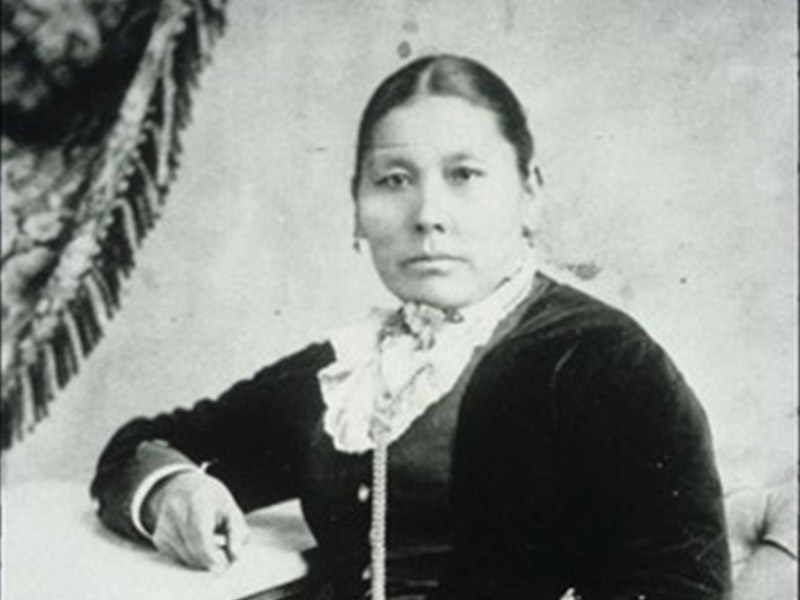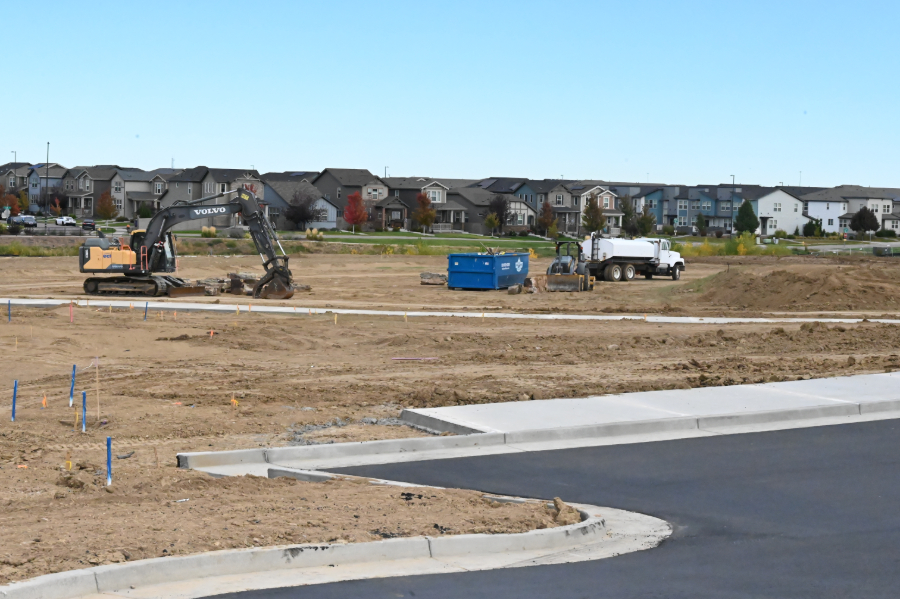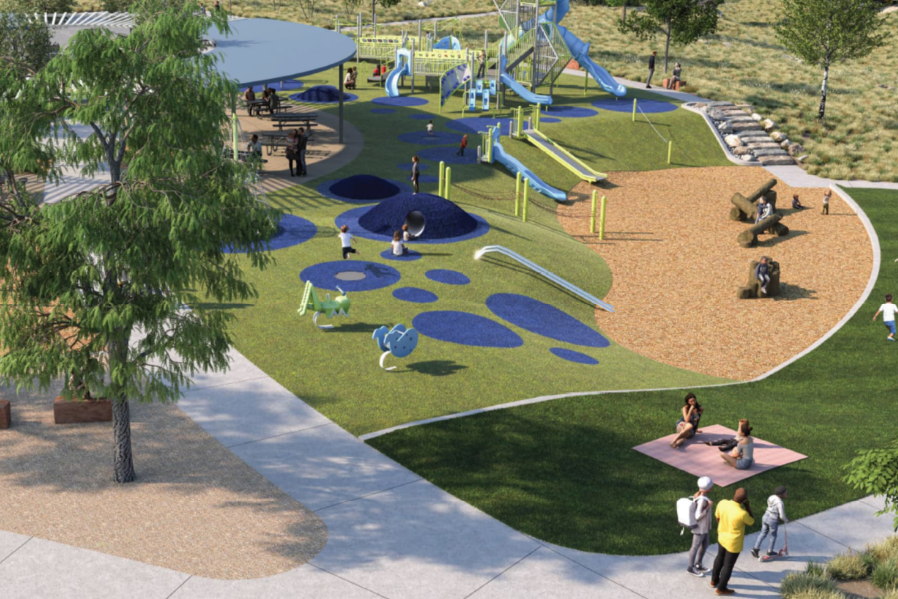
Colorado Women’s Hall of Fame

Audio By Carbonatix
The City of Denver will christen a future Green Valley Ranch park as Amache Prowers Memorial Park in honor of the nineteenth century Native American rights activist and Sand Creek Massacre survivor.
The $8 million park, approved by Denver City Council earlier this week, will open along the intersection of South Kittredge Street and East Boiling Drive, two residential streets near Green Valley Ranch’s border with Montbello, just north of Interstate 70 and Airport Boulevard. Prowers, also known as Walking Woman, is known for helping survivors of the Sand Creek Massacre in 1864. She also protected and passed on Colorado’s Indigenous history and traditions while trying to bridge cultures during the state’s formative years.
“This park would be a tribute to her dedication to the cultural understanding, community leadership and role in shaping Colorado,” reads an ordinance naming the park. In a memo to council, Denver Parks and & Recreation executive director Jolon Clark described Prowers as a “mediator between Colorado settlers, Mexicans and Native American communities during the 1860s and 1870s.”
Denver City council unanimously approved the name Amache Prowers Memorial Park during its meeting on Monday, October 6. According to Councilwoman Stacie Gilmore, who represents northeast Denver, the park will open by summer.
Will you step up to support Westword this year?
At Westword, we’re small and scrappy — and we make the most of every dollar from our supporters. Right now, we’re $23,000 away from reaching our December 31 goal of $50,000. If you’ve ever learned something new, stayed informed, or felt more connected because of Westword, now’s the time to give back.
Who Was Amache Prowers?
Prowers was born Amache Ochinee in 1846, a member of the Southern Cheyenne tribe, in the southeastern plains of Colorado. She married cattle trader John Prowers in 1861, when she was just fifteen years old. She took his last name but kept up Cheyenne traditions, historians say, including the language and recipes for food and medicine.
While camping by Sand Creek in southeastern Colorado, the couple was kidnapped as troops led by Colonel John Chivington prepared to raid a camp of Cheyenne and Arapaho; over 200 people were killed, primarily women, children and old men, while younger men were away hunting. The attack broke a treaty negotiated by Amache’s father, Cheyenne Chief O’kenehe, who was one of many chiefs killed at Sand Creek on November 29, 1864.
Amache and John Prowers were eventually released. In 1865, the two testified in Congress and helped win 160 acres of land for each tribal member who lost family in the Sand Creek Massacre, according to the National Park Service. Amahe and her surviving family, including her mother and two daughters, combined their allotments and built a large adobe house, and operated a school, a general store and hotel on that land, expanding her husband’s cattle trading business on the 640 total acres. By 1881, they had 15,000 head of cattle, and were helping develop the town of Boggsville in eastern Colorado, which is now part of Prowers County, named after the couple.
Amache taught her nine children both English and the Cheyenne language, raising them with Anglo and Indigenous cultures. According to the NPS, she “continued to be involved with the Cheyenne community and speak out for their interests” throughout her life. She died in 1905, about twenty years after her husband. She is buried at Las Animas Cemetery.
A few decades after her death, the Japanese internment camp officially dubbed the Granada War Relocation Center became known as “Camp Amache” after a mail mix-up with the nearby town of Granada. More than 10,000 people of Japanese ancestry were incarcerated there from 1942 to 1945, according to the NPS. Two years ago, the NPS designated the location as a National Historic Site.
In 2018, the Colorado Women’s Hall of Fame inducted Amache Prowers for her “poignant” efforts to bring different cultures together and keep the memory of the Sand Creek Massacre alive.
“Prowers never forgot the injustices of ethnic genocide,” a description from the Colorado Women’s Hall of Fame reads. “She kept a teepee in the backyard to seek respite from the tumultuous changes brought by the American conquest of Indian land and peoples in Colorado.”

Bennito L. Kelty
Amache Prowers Memorial Park will be the first urban park in the city named after a Native American, according to the City of Denver.
According to council documents, Trennie Burch, co-chair of the city’s American Indian Commission, suggested the name, but it also came up during public surveys. A naming committee appointed by Parks & Rec nominated Amache Prowers Memorial Park as the final choice; the Parks and Recreation Advisory Board unanimously agreed.
Right now, the park is just a ten-acre span of dirt in the middle of a tranquil neighborhood, but plans include a playground, shaded benches and tables, grassy picnic areas, dozens of trees, a turf field for soccer, volleyball and other sports, and courts for tennis or pickleball. Across the street, an off-leash dog park is already open next to the well-hidden Kittredge West Lake, a fishing pond.
The park’s development was approved by council in 2024, and construction began this spring. The $8 million to build Amache Prowers Memorial Park is coming from the Avion Metropolitan District, formerly the Denver Connection West Metro District, which raises funds through property taxes. According to Denver City Council, the district gifted “a significant amount of funding and the land” for the park, and signed off on the name. Parks & Rec will take control of park operations upon completion.

The City of Denver